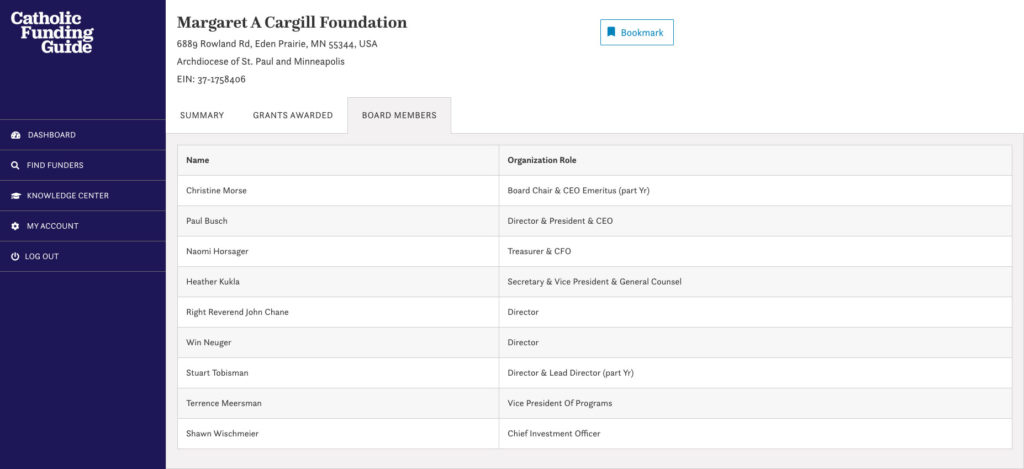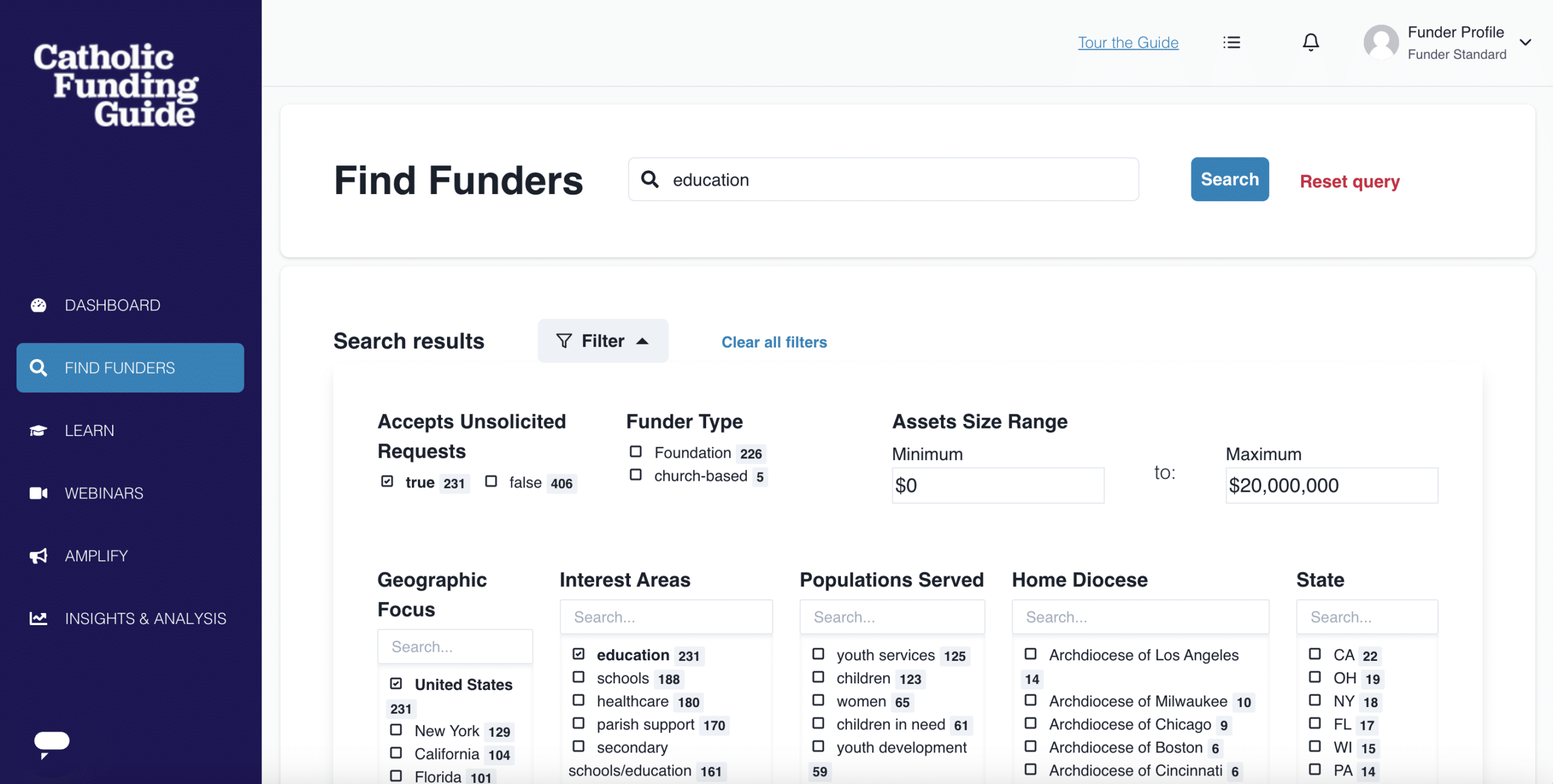You’ve done your research, combed through prospective funders in the Catholic Funding Guide, and found several foundations that seem like a good fit for your ministry. Full of hope (and a bit of apprehension), you know now is the time to reach out and introduce them to the great work your ministry does. You are ready to write a letter of inquiry (LOI), the first step in securing a grant.
This letter will likely be your first interaction with the funder, so it is crucial to make a good impression. These 6 steps will help you craft the most effective letter of inquiry.
Step 1: Consider your prospective funder.
Thoroughly research the Catholic foundation you are interested in, and find out the answers to the following questions:
- What are their funding priorities, and how much do they typically fund?
- Do they have specific criteria for organizations they fund, and does your organization meet those criteria?
- Do they specify length or content requirements for the LOI?
- What, if any, attachments do they request be sent with an LOI?
- When do they accept LOIs?
Before you move forward and begin the writing process, make sure that your organization, your specific funding request, and the letter of inquiry you submit meet all criteria specified by the funder.
Ensure your letter of inquiry is written with your funder in mind. You can find an abundance of templates and sample letters online, or use a previous letter of inquiry as a starting point; however, be sure to personalize your letter for this particular foundation. The more specific you can be about how your organization and project align with the mission and priorities of this specific funder, the more compelling your letter of inquiry will be.
Step 2: Reflect on how to tell your story.
We connect best with others through stories that touch our hearts and engage our minds. As an introduction to your organization that you hope will begin a long-lasting relationship with this funder, the letter of inquiry should:
- Inspire the foundation staff with the important work you do.
- Build confidence in your organization’s ability to achieve the desired outcomes of your proposed project.
You want to convey your story in a compelling, memorable way. Consider these questions:
- What statistics related to your project are surprising?
- What personal, real-life stories do you have that will touch the hearts of the funder and show the tangible impact of your work?
- How can you share your organization’s successes in a way that builds confidence in your ability to carry out this project?
“We connect best with others through stories that touch our hearts and engage our minds.”
Remember that you are sending this letter to a real person. Telling your story has the ability to touch this person’s heart and excite them about the difference they can make through funding your project.
Step 3: Use the proper format for your letter of inquiry.
As a reflection of your organization, and possibly the only experience this Catholic foundation will have with your organization when deciding if they’d like to take the next step in the funding process with you, it is critical that your letter be professional and written in the appropriate format.
Like any official organizational communication, it should be typed on letterhead in a professional font that is easy to read, such as Calibri, Arial, or Times New Roman. Use a typical letter format and margins, with a legible font size and line spacing
One of the hardest parts of writing a good letter of inquiry is that it should be brief. If not otherwise specified by the funder, letters of inquiry should be no more than 3 pages. Oftentimes, funders prefer even shorter 1-2 page letters. It can be a challenge to convey even the most essential information in that space, but taking the time to convey your message concisely will make your letter of inquiry clear and easy to read, hopefully leading the funder to request a full proposal.
Consider the appropriate sender and recipient for the letter of inquiry. The letter should be signed by a prominent representative of your organization—usually an Executive Director or comparable position to show their support of this initiative. When addressing the letter it is important to find the name of an actual person rather than addressing it to “Dear Sir / Madam.” Check the Catholic Funding Guide for a list of the foundation’s board members if a recipient is not provided in their Funding Request Process Information.
In most cases, the letter of inquiry should be sent through the physical mail, though, again, every funder has varying requirements. Find out their preference and be sure to communicate with them in that way.
Step 4: Write your letter of inquiry.
When writing your letter of inquiry, be sure to include these components, unless otherwise specified by the funder:
Introduction / Executive Summary
In this section, introduce your organization and the project for which you are seeking funding, as well as the amount of funding requested. Be sure to include how the project aligns with the foundation’s guidelines and funding priorities. Refer to the foundation’s mission statement and previously funded programs and emphasize the ways in which your project fulfills their mission or is consistent with other initiatives the foundation has supported.
Description of Organization
Next, share more information about your organization, including the mission statement, a brief history of the organization, and any outstanding accomplishments. Include a description of current programs and activities that are relevant to your project as well as your vision and aspirations for the future. The goal of this section is to build confidence in your organization’s competence to achieve desirable outcomes.
Statement of Need
Once you have established your organization’s credibility, it’s time to convey the need that prompted the proposed project. This section should include memorable statistics that clearly express the need as well as touching real life, personal examples.
Methodology
After the need has been established, explain your organization’s clear, logical solution. Describe the major activities of the project as well as the roles and qualifications of key staff. Finally, present the desired objectives and how you will measure success. Ultimately, the goal is to convey that you have a solid, effective plan and a competent, professional team that will make a real, lasting impact for the people you serve.
Other Funding Sources
Next, include the names of other funders who have already committed to this project with monetary or in-kind contributions. This section shows that the project has broad support and is both achievable and sustainable.
Summary
The final part of the letter of inquiry is a summary, in which you briefly restate the purpose of your project as well as why it is needed and a good fit for the funder. Then, you should offer to answer any questions and provide a post of contact for them. Finally, thank them for their time and consideration.
Attachments
Generally, no attachments are needed to your letter of inquiry;, however, some funders may request additional information, such as an annual report, a project budget, verification of tax-exempt status, or a listing in the Official Catholic Directory. It is best practice to only include information specifically requested by the funder.
Step 5. Proofread your letter of inquiry.
After spending time compiling information and writing your letter, it’s always a good idea to have someone else in your organization proofread the final draft. This will help eliminate any typos and ensure clarity.
Step 6. Send your letter of inquiry to the funder.
Be sure to submit your letter of inquiry by the funder’s preferred method of communication with plenty of time before any specified deadline. Avoiding a last-minute submission will make the process less stressful and start the relationship with the funder on the right foot.
Once your LOI is in the mail, it can be nerve-wracking to wait for a response, but you can feel confident knowing you’ve crafted a concise and convincing letter of inquiry. If your prospective funder reaches out to you expressing interest in a proposal, it’s time to write a grant. Our grant writing guide for Catholic organizations is a great place to start.




